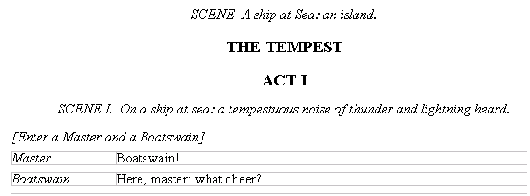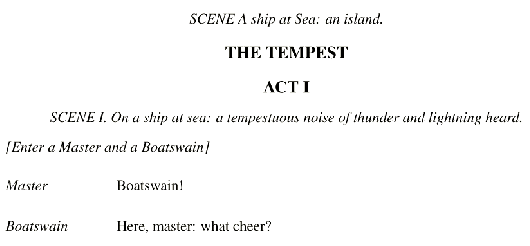|
|
[This local archive copy mirrored from the canonical site: http://www.tug.org/applications/jadetex/isug/isug.html; links may not have complete integrity, so use the canonical document at this URL if possible.]
DSSSL is one of the great frustrations of the SGML world. On the one hand, it is the eagerly-awaited result of years of work, which finally seems to have produced a genuinely useful model of multi-lingual text transformation and formatting (Figure 1). On the other hand, its very complexity and completeness means that
In addition, the style of the language used for writing specifications (more or less, but not exactly, Scheme) has had an unfortunate off-putting effect on those more used to Omnimark or C++.
However, the (publicly visible) DSSSL community is slowly developing, thanks in the main part to two things: James Clark's partial implementation, Jade1 , and the considerable effort put by Norm Walsh into DSSSL specifications for formatting documents marked up against the Docbook DTD. The latter effort is targeted at HTML and RTF output, and has effectively demonstrated that the lack of the DSSSL transformation language in Jade is no barrier to very useable.
|
|
But there is more to Jade than RTF and HTML. What if we need real typesetting, beyond the capabilities of Microsoft? Then we can turn to the TEX backend. This has many advantages
For many years, of course, SGML practioners have transformed their files to the input format of various formatting engines, including TEX, but now we have a chance to write device independent specifications and use TEX's power to instantiate them.
Jade 's TEX backend (originally written by David Megginson, since modified by Sebastian Rahtz and Kathleen Marszalek) has a very simple model: it emits a TEX command for the start and end of every flow object, defining any changed characteristics at the start of the command. This abstract TEX markup can then be fleshed out by writing definitions for each of the flow object commands, and this is what the JadeTEX macro package provides. It is implemented on top of the widely used LATEX macro package, for a variety of reasons:
This means that it provides a good short cut to an implementation, to see whether TEX can in fact meet the demands of DSSSL. It is important, however, for regular LATEX users to realize that no use is made of LATEX high-level constructs. There are no familiar sections, lists, cross-references, or bibliographies; everything is expressed in terms of vertical and horizontal space, font changes etc, explicit in the specification. Only page and line breaking is left to TEX: the rest is up to the DSSSL code.
Jade 's TEX backend is available by default. The JadeTEX macros are delivered (at ftp://ftp.tex.ac.uk/tex-archive/macros/jadetex/) in a packed format; they must first be expanded, and then used to build a new TEX format file. The sequence of command might look like this, using a modern TEX system based on Web2c 7.2:
which produces format files pdfjadetex.fmt and jadetex.fmt which can be moved to where TEX looks for such things. In practice, you will find a working system set up ready to go on the TEX Live CD-ROM (see http://www.tug.org/texlive/).
Assuming we have a working system, usage can be as simple as
which process the SGML file article.sgml with the DSSSL specification article.dsl and writes article.tex; this is then run through pdfTEX, which will write article.pdf, which you can view or print.
Let us look at what goes in and what comes out. If the DSSSL specification looks like this:
(root (make simple-page-sequence
right-header: (literal "DSSSL Test")
center-footer: (page-number-sosofo)
then the intermediate TEX file (which is not meant to be edited bu humans!), looks like this:
which clearly demonstrates the way Jade simply writes a macro name for the flow
objects, and a series of \def commands for the characteristics.
Now consider some simple SGML markup
processed by this DSSSL
from which Jade will write
Here we see as a side effect that almost every object that comes out of Jade has an `Elememt' identifier, used for cross-referencing.
What about mathematics? This is TEX's traditional strength, and something that few typesetting systems handle well. The intent of the following SGML markup should be fairly clear (to render as X Y ):
The DSSSL specification might look like this:
and that results in the (slightly simplified) TEX code:
For TEX aficionadoes, the implementation of these macros is as follows (simplified):
The subset of DSSSL supported by Jade only covers `simple page sequences', which do not allow such stables for the scientific publishing community as floating figures, footnotes, and multiple columns. To work around this, the TEX backend of Jade supports the following extra flow objects and characteristics:
(declare-flow-object-class page-float
"UNREGISTERED::Sebastian Rahtz//Flow Object Class::page-float")
(declare-flow-object-class page-footnote
"UNREGISTERED::Sebastian Rahtz//Flow Object Class::page-footnote")
(declare-characteristic page-n-columns
"UNREGISTERED::James Clark//Characteristic::page-n-columns" 1)
(declare-characteristic page-column-sep
"UNREGISTERED::James Clark//Characteristic::page-column-sep" 4pt)
(the RTF backend also supports the last two.) These allow the specification author to produce simple multicolumn pages, with footnotes and floating figures.
Numbered equations are still an unresolved issue, since they too require more complex objects than Jade supports
It is not hard to process simple texts with Jade and see more or less identical output from the RTF and the TEX backends (Figures 2 and 3). The pages displayed in Figures 5 and 6 are more interested, as they demonstrate that a DSSSL specification, Jade, and JadeTEX can produce plausible pages of a scientific article. Figure 4 shows a portion of the math in Figure 5 as displayed in Microsoft Word, demonstrating the inadequacy of the math support in RTF (though the spacing can be adjusted for a somewhat better display).


|
|
|
|
|
|
|
The potential power of SGML/XML, DSSSL and TEX working together is fairly awesome. Unfortunately, there are some downsides to what we have today:
In addition, JadeTEX has some problems of its own:
We also have to consider what will happen if we get a full DSSSL implementation, where the front end will provide parallel streams of input (for the body text, footnotes, floats etc), along with information about how items in the streams have to be synchronized (e.g. appear on the same page), and each stream will have its own independent stack for inherited characteristics. The TEX backend currently handles flow objects with multiple streams by serializing the streams, i.e. giving you them each in sequence. This would not work well for column-set-sequence. You would get the main body text for a chapter followed by all the footnotes for the chapter, followed by all the floats for the chapter, plus information about which point in the body text was to be synchronized with each float/footnote. This would almost certainly be a monumental task to program in TEX, and really needs a complete rethink of how the backend works.
All this does not mean that we should despair. The Jade DSSSL implementation already supports a huge amount of useful transformation and specification code, and TEX is close to being a DSSSL-capable formatter. Since the TEX world knows about Unicode (in the shape of the Omega project, see http://www.ens.fr/omega) we are closer than many systems to dealing effectively with true multi-script typesetting.
In the medium term, it will be necessary to rewrite the font handling inside the backend, for speed, and to optimize the handling of labels and references (so many things are labelled at present that TEX can run out of memory for potential cross-references). In the longer term, it would nice to rewrite the JadeTEX macros to be independent of LATEX, and reimplement it to use Omega and native Unicode.
DSSSL is not perfect, and neither is TEX; but they do make a very nice combination. . .